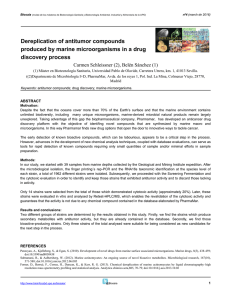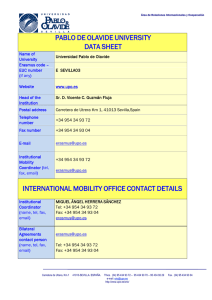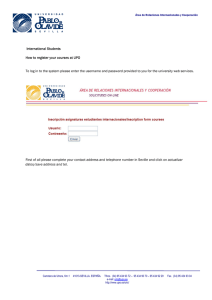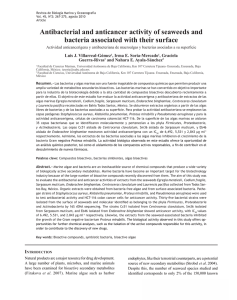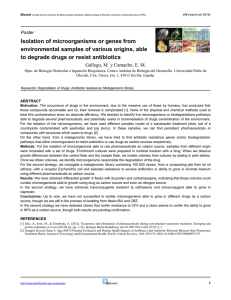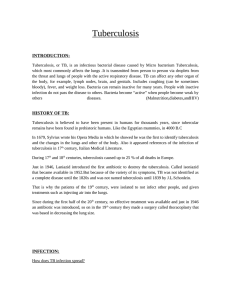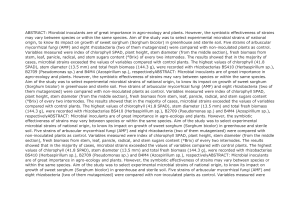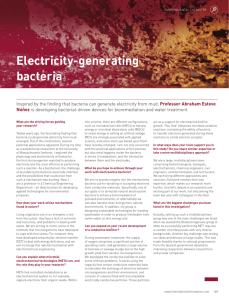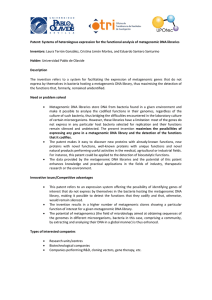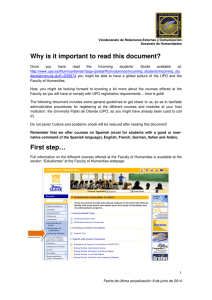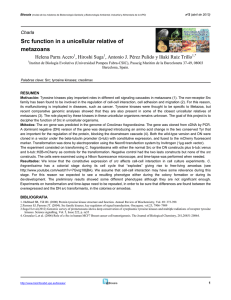Characterization of plant growth promoting bacteria (PGPR) isolated
Anuncio
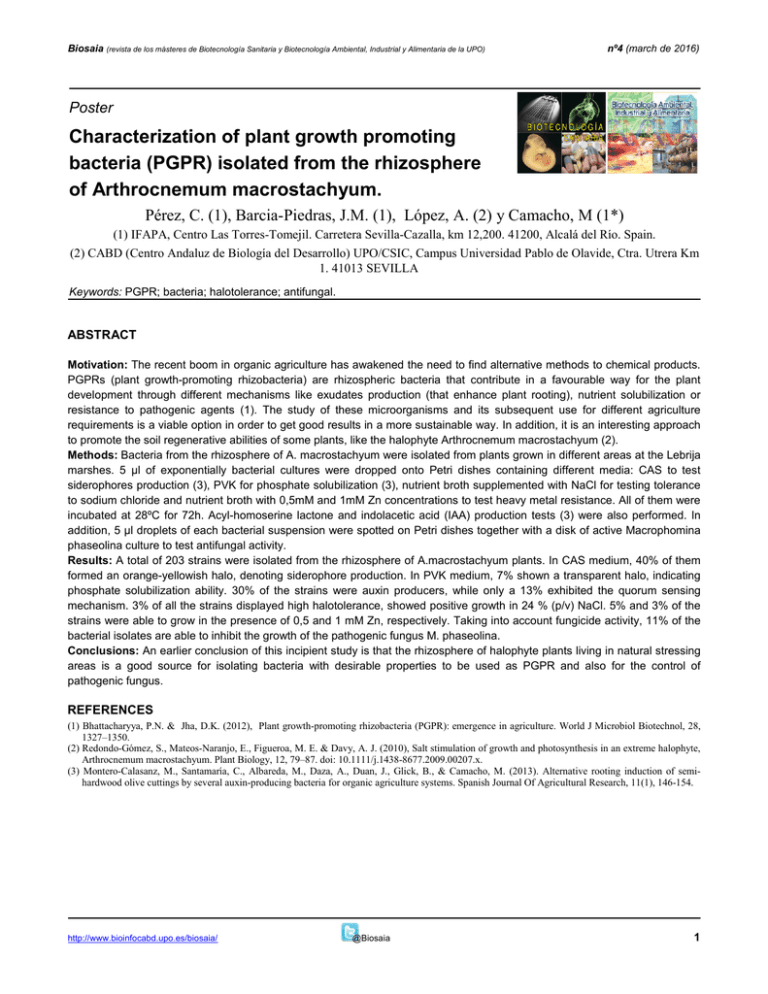
Biosaia (revista de los másteres de Biotecnología Sanitaria y Biotecnología Ambiental, Industrial y Alimentaria de la UPO) nº4 (march de 2016) Poster Characterization of plant growth promoting bacteria (PGPR) isolated from the rhizosphere of Arthrocnemum macrostachyum. Pérez, C. (1), Barcia-Piedras, J.M. (1), López, A. (2) y Camacho, M (1*) (1) IFAPA, Centro Las Torres-Tomejil. Carretera Sevilla-Cazalla, km 12,200. 41200, Alcalá del Río. Spain. (2) CABD (Centro Andaluz de Biología del Desarrollo) UPO/CSIC, Campus Universidad Pablo de Olavide, Ctra. Utrera Km 1. 41013 SEVILLA Keywords: PGPR; bacteria; halotolerance; antifungal. ABSTRACT Motivation: The recent boom in organic agriculture has awakened the need to find alternative methods to chemical products. PGPRs (plant growth-promoting rhizobacteria) are rhizospheric bacteria that contribute in a favourable way for the plant development through different mechanisms like exudates production (that enhance plant rooting), nutrient solubilization or resistance to pathogenic agents (1). The study of these microorganisms and its subsequent use for different agriculture requirements is a viable option in order to get good results in a more sustainable way. In addition, it is an interesting approach to promote the soil regenerative abilities of some plants, like the halophyte Arthrocnemum macrostachyum (2). Methods: Bacteria from the rhizosphere of A. macrostachyum were isolated from plants grown in different areas at the Lebrija marshes. 5 µl of exponentially bacterial cultures were dropped onto Petri dishes containing different media: CAS to test siderophores production (3), PVK for phosphate solubilization (3), nutrient broth supplemented with NaCl for testing tolerance to sodium chloride and nutrient broth with 0,5mM and 1mM Zn concentrations to test heavy metal resistance. All of them were incubated at 28ºC for 72h. Acyl-homoserine lactone and indolacetic acid (IAA) production tests (3) were also performed. In addition, 5 µl droplets of each bacterial suspension were spotted on Petri dishes together with a disk of active Macrophomina phaseolina culture to test antifungal activity. Results: A total of 203 strains were isolated from the rhizosphere of A.macrostachyum plants. In CAS medium, 40% of them formed an orange-yellowish halo, denoting siderophore production. In PVK medium, 7% shown a transparent halo, indicating phosphate solubilization ability. 30% of the strains were auxin producers, while only a 13% exhibited the quorum sensing mechanism. 3% of all the strains displayed high halotolerance, showed positive growth in 24 % (p/v) NaCl. 5% and 3% of the strains were able to grow in the presence of 0,5 and 1 mM Zn, respectively. Taking into account fungicide activity, 11% of the bacterial isolates are able to inhibit the growth of the pathogenic fungus M. phaseolina. Conclusions: An earlier conclusion of this incipient study is that the rhizosphere of halophyte plants living in natural stressing areas is a good source for isolating bacteria with desirable properties to be used as PGPR and also for the control of pathogenic fungus. REFERENCES (1) Bhattacharyya, P.N. & Jha, D.K. (2012), Plant growth-promoting rhizobacteria (PGPR): emergence in agriculture. World J Microbiol Biotechnol, 28, 1327–1350. (2) Redondo-Gómez, S., Mateos-Naranjo, E., Figueroa, M. E. & Davy, A. J. (2010), Salt stimulation of growth and photosynthesis in an extreme halophyte, Arthrocnemum macrostachyum. Plant Biology, 12, 79–87. doi: 10.1111/j.1438-8677.2009.00207.x. (3) Montero-Calasanz, M., Santamaría, C., Albareda, M., Daza, A., Duan, J., Glick, B., & Camacho, M. (2013). Alternative rooting induction of semihardwood olive cuttings by several auxin-producing bacteria for organic agriculture systems. Spanish Journal Of Agricultural Research, 11(1), 146-154. http://www.bioinfocabd.upo.es/biosaia/ @Biosaia 1
